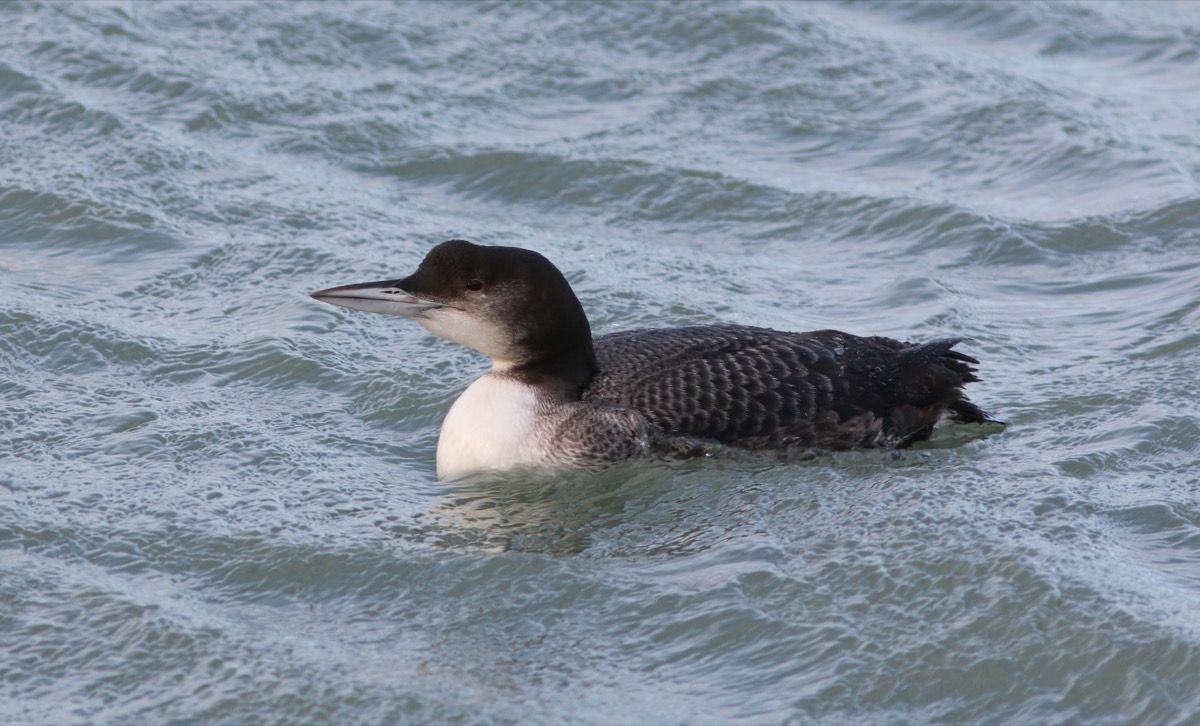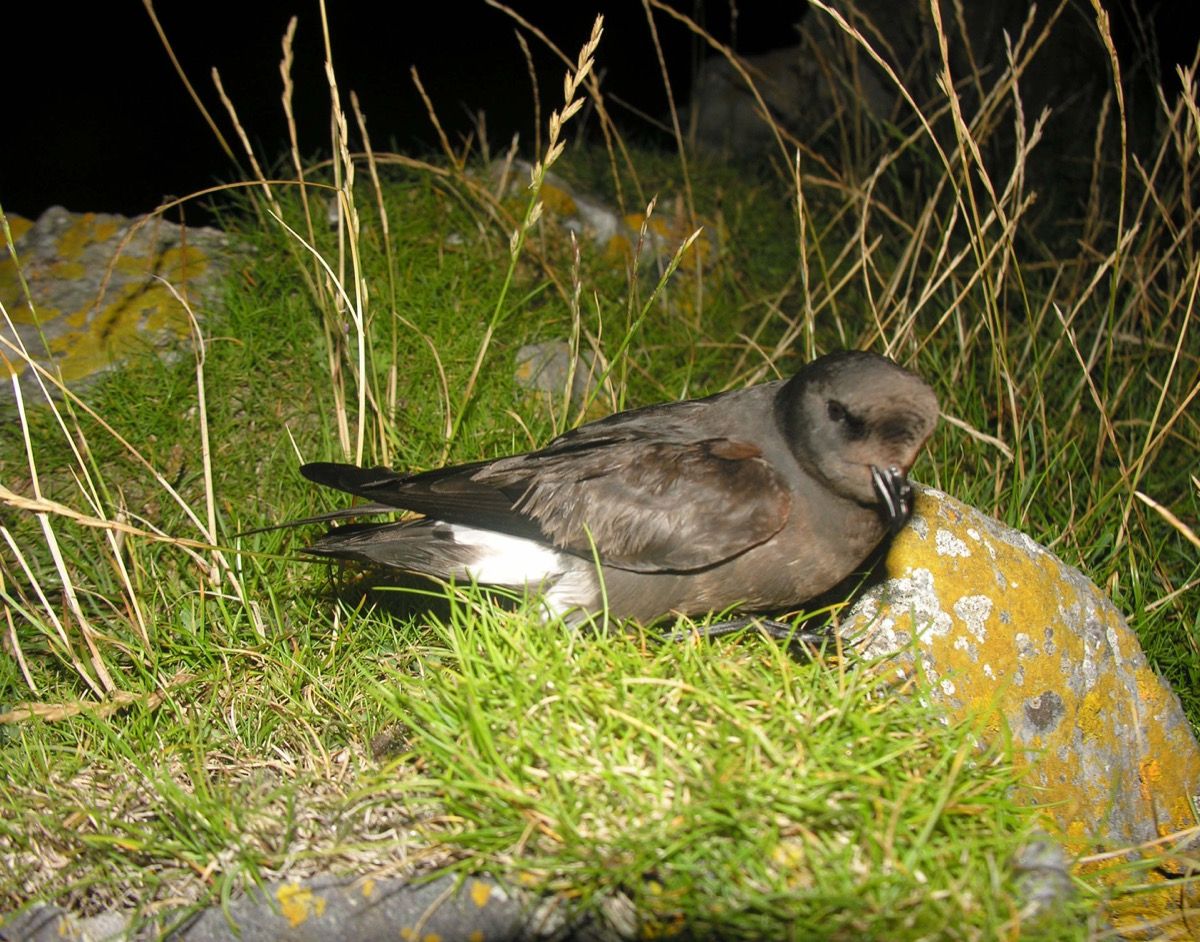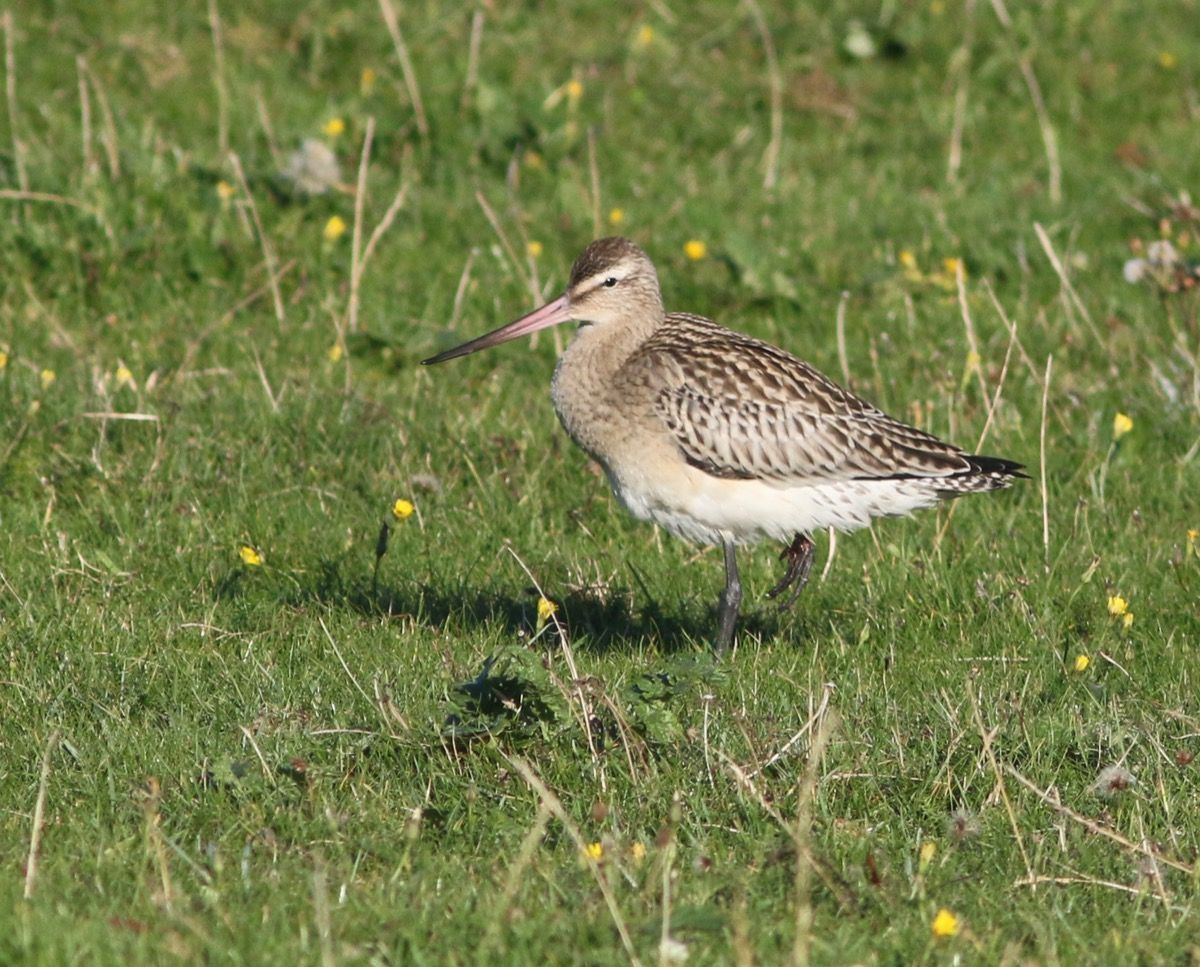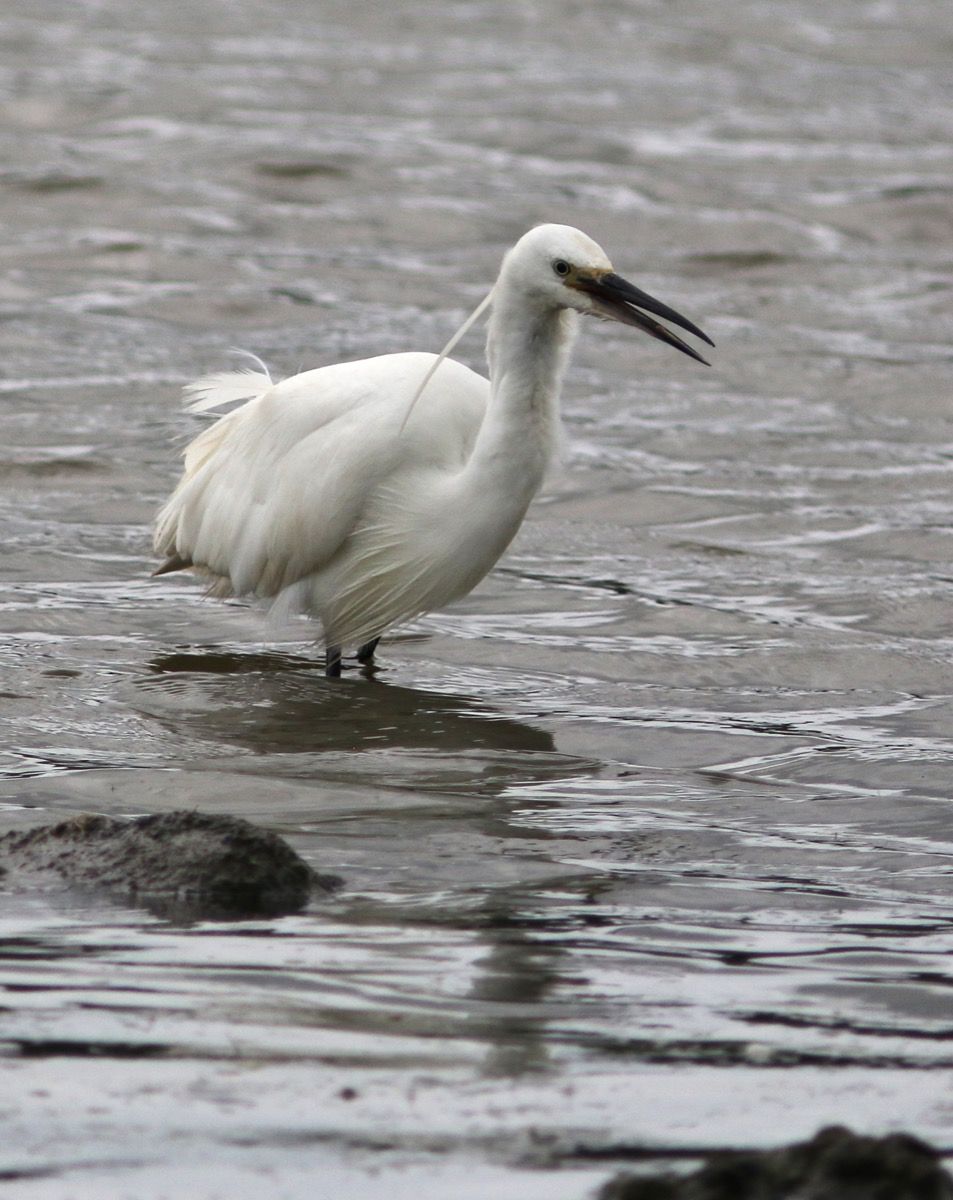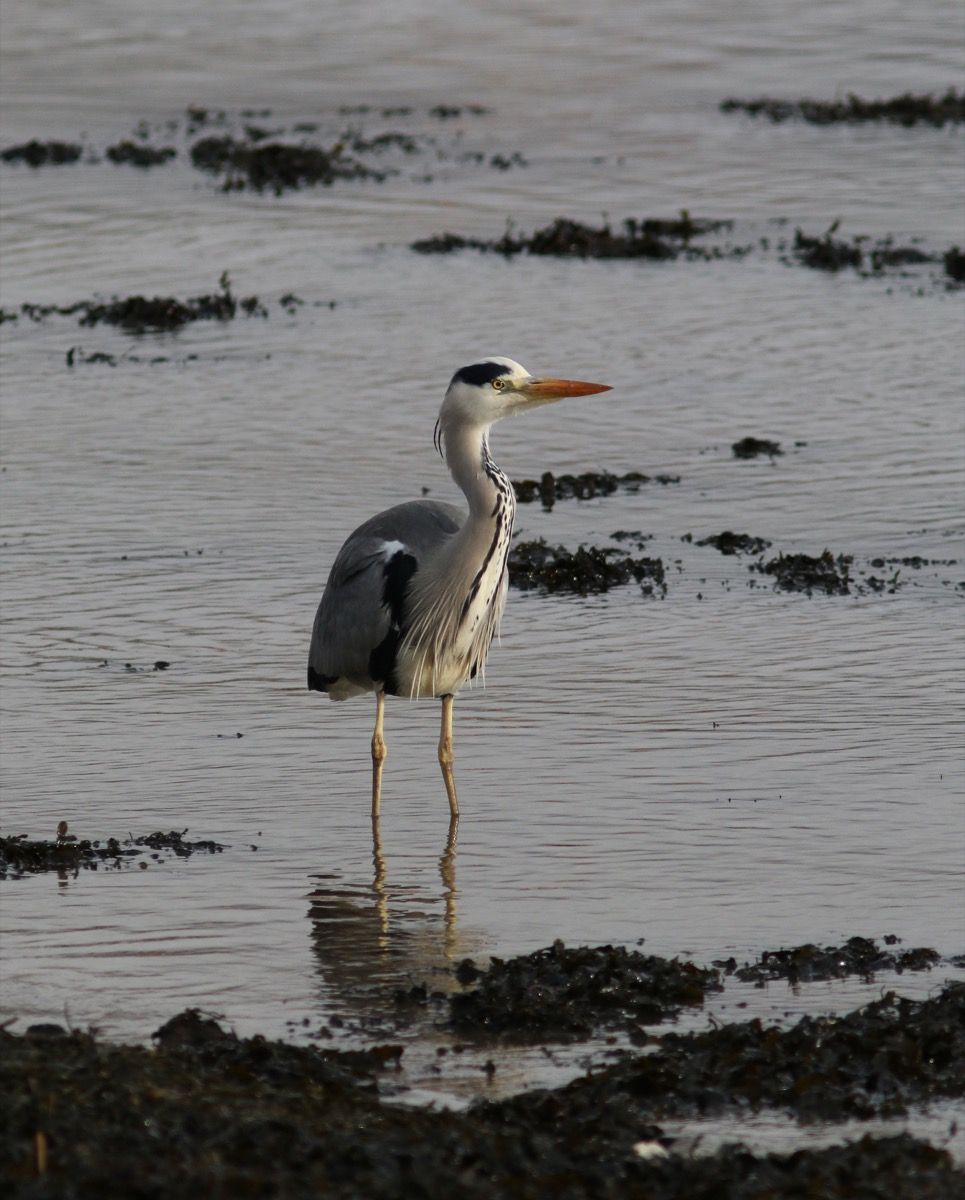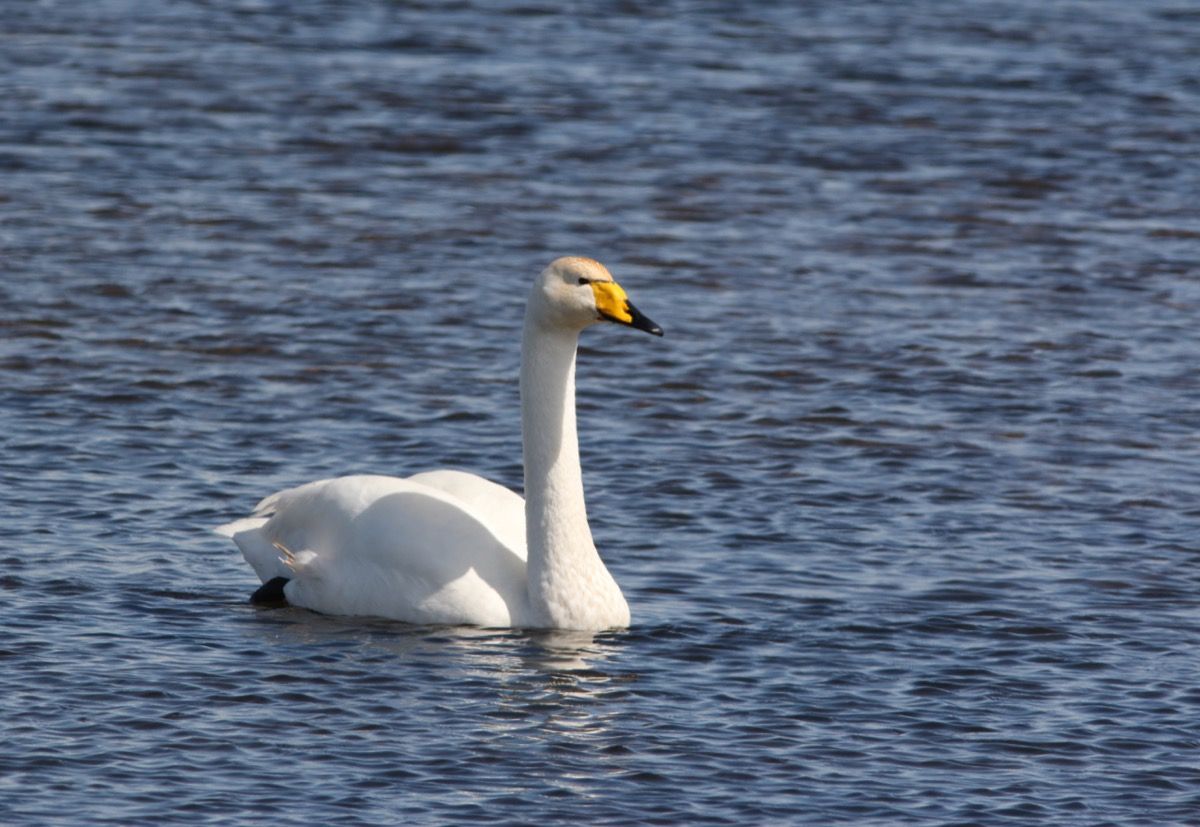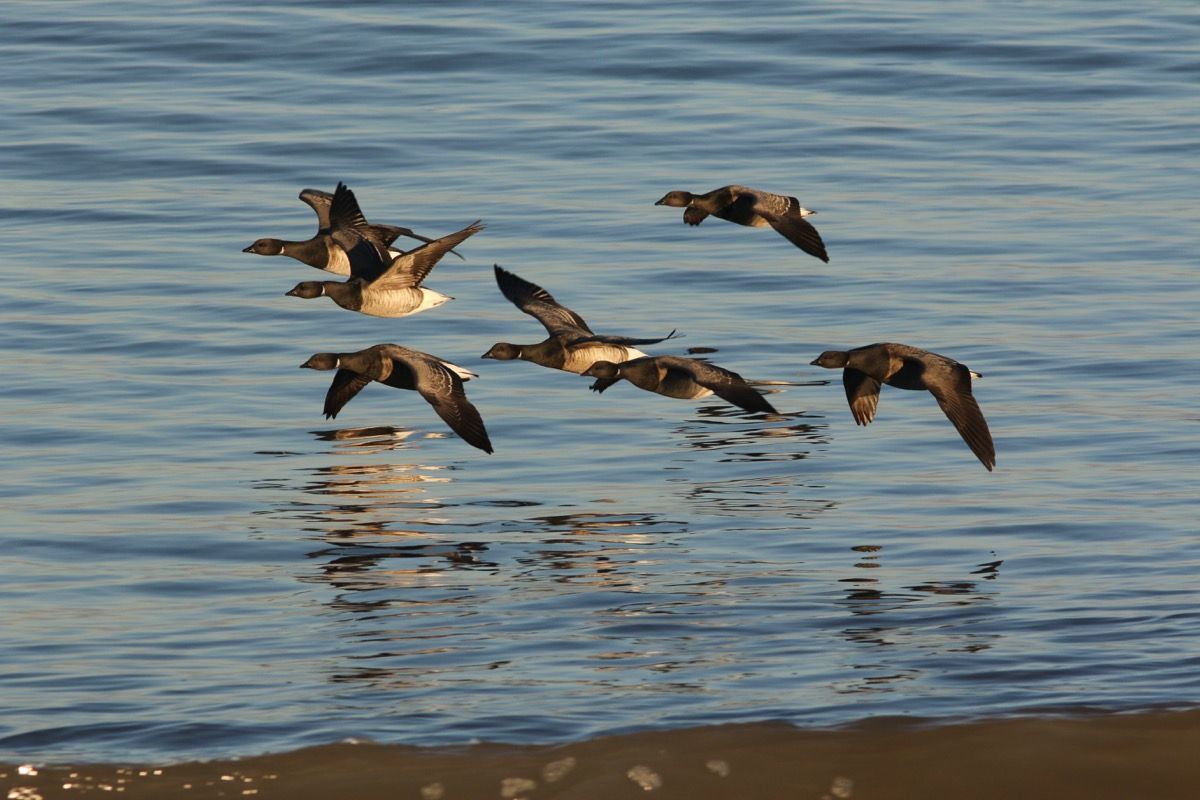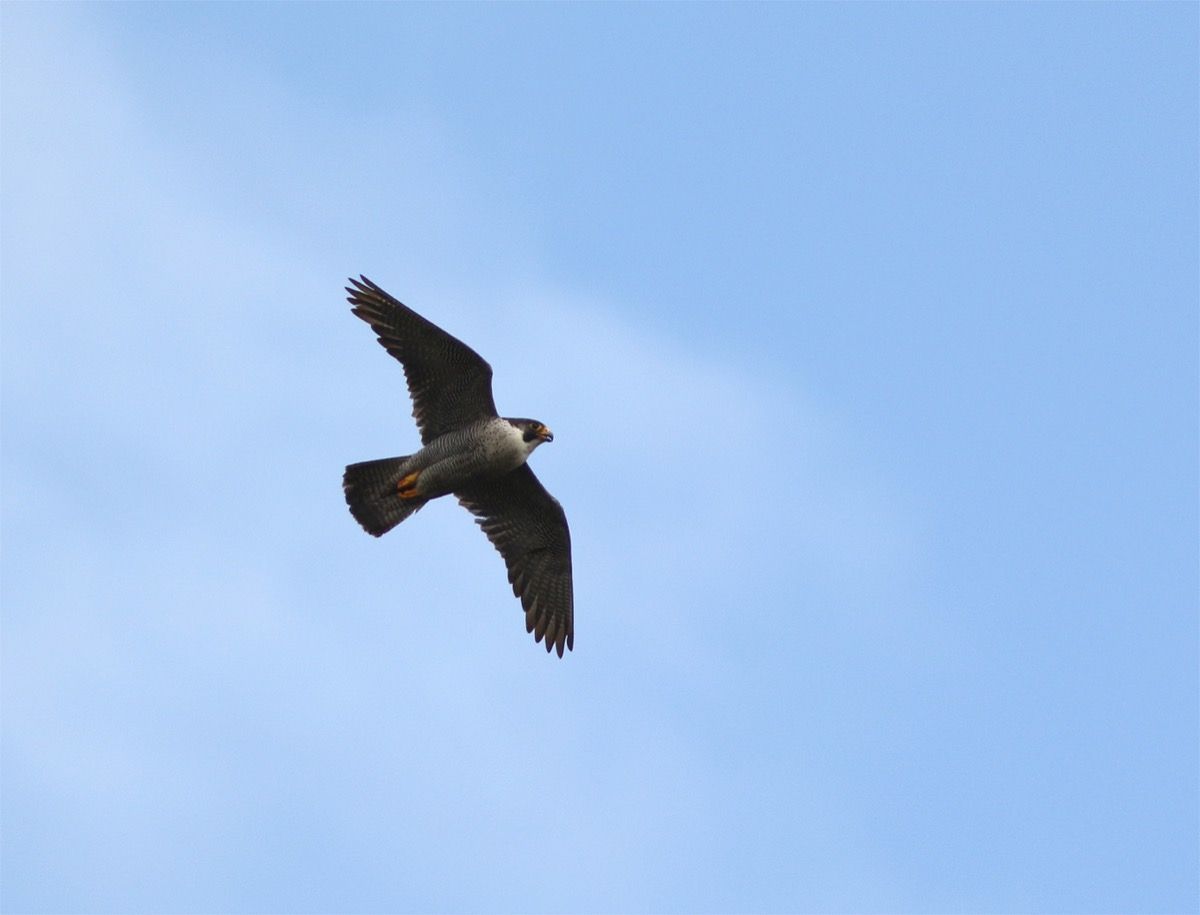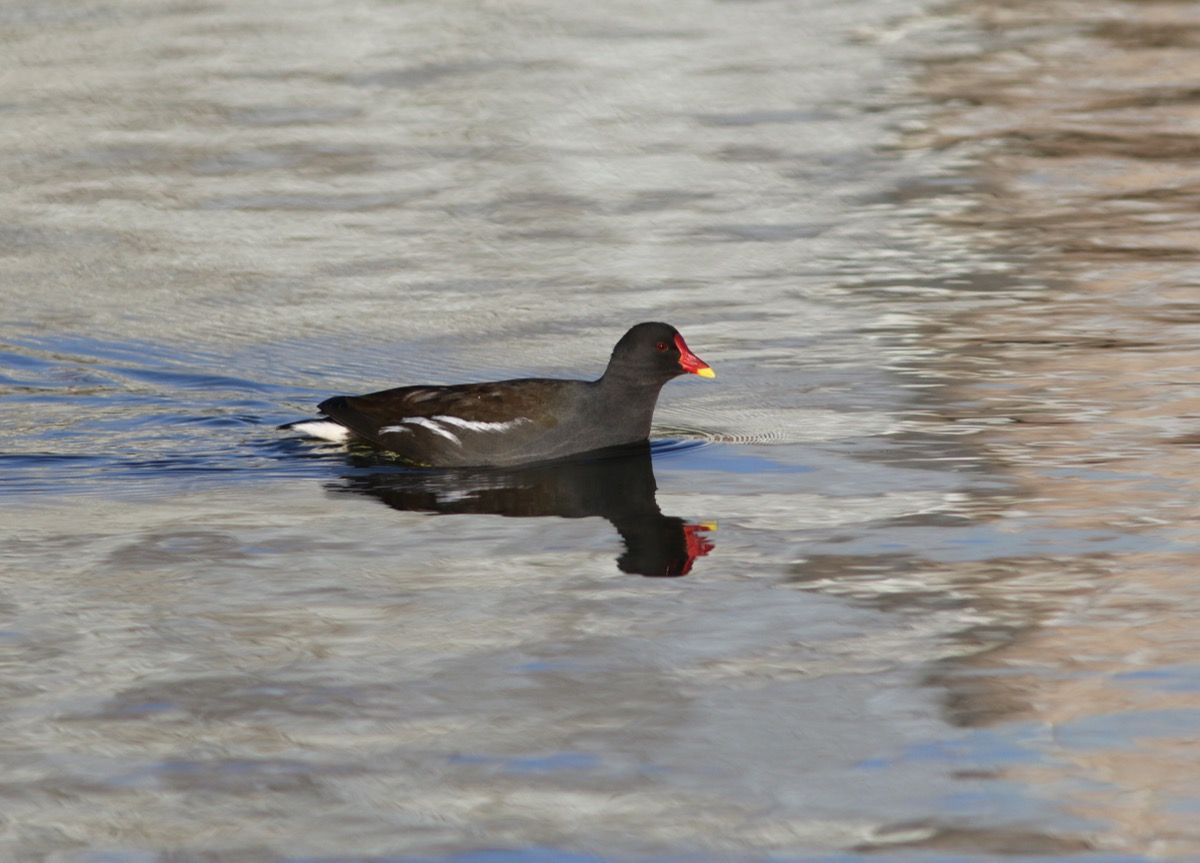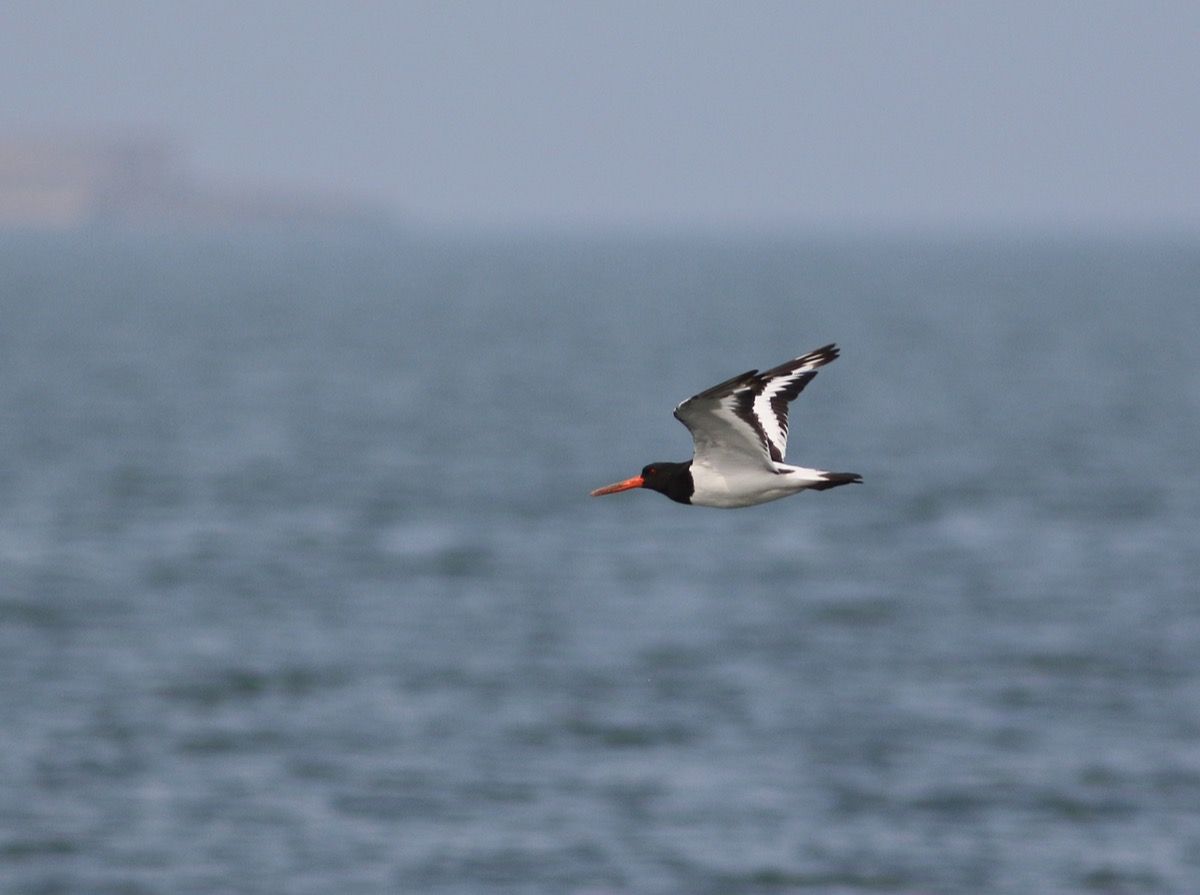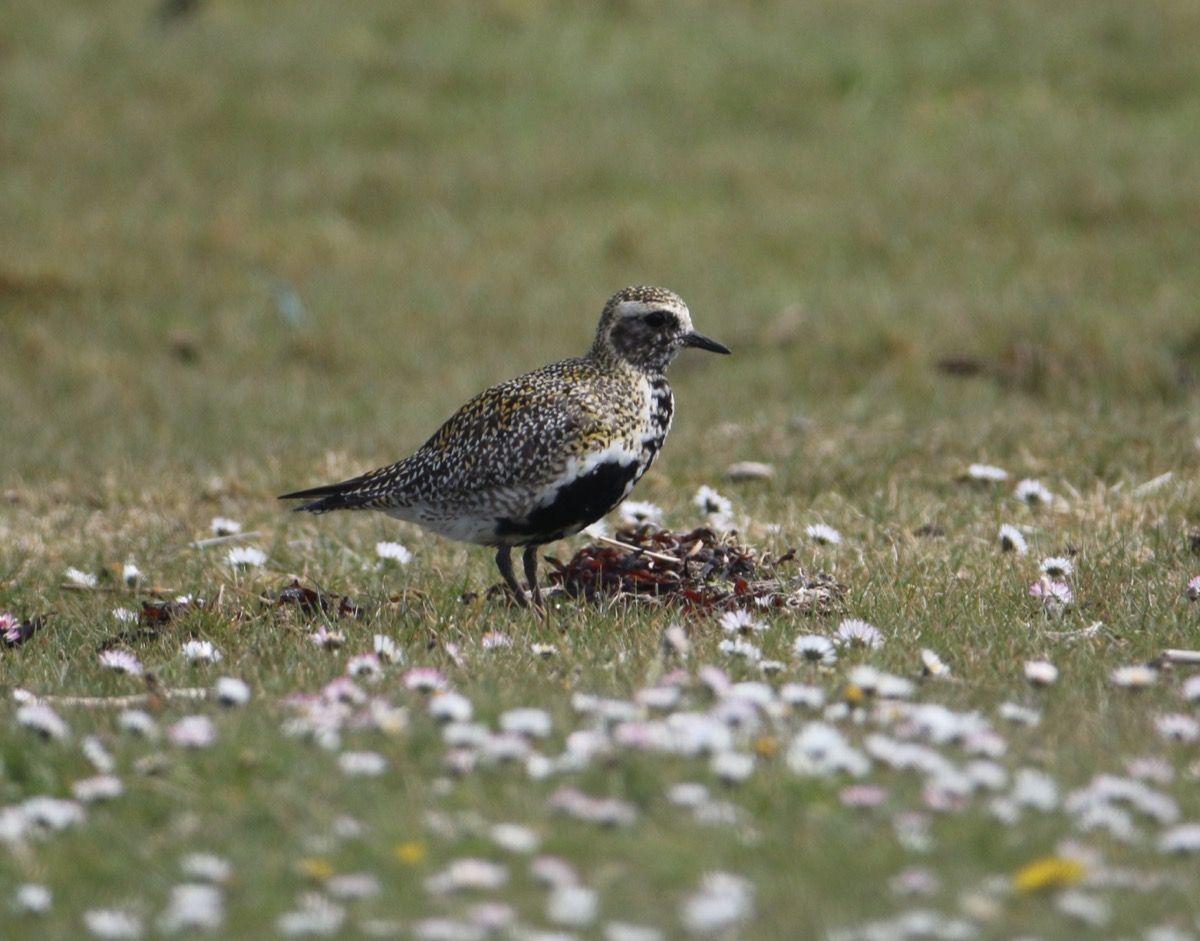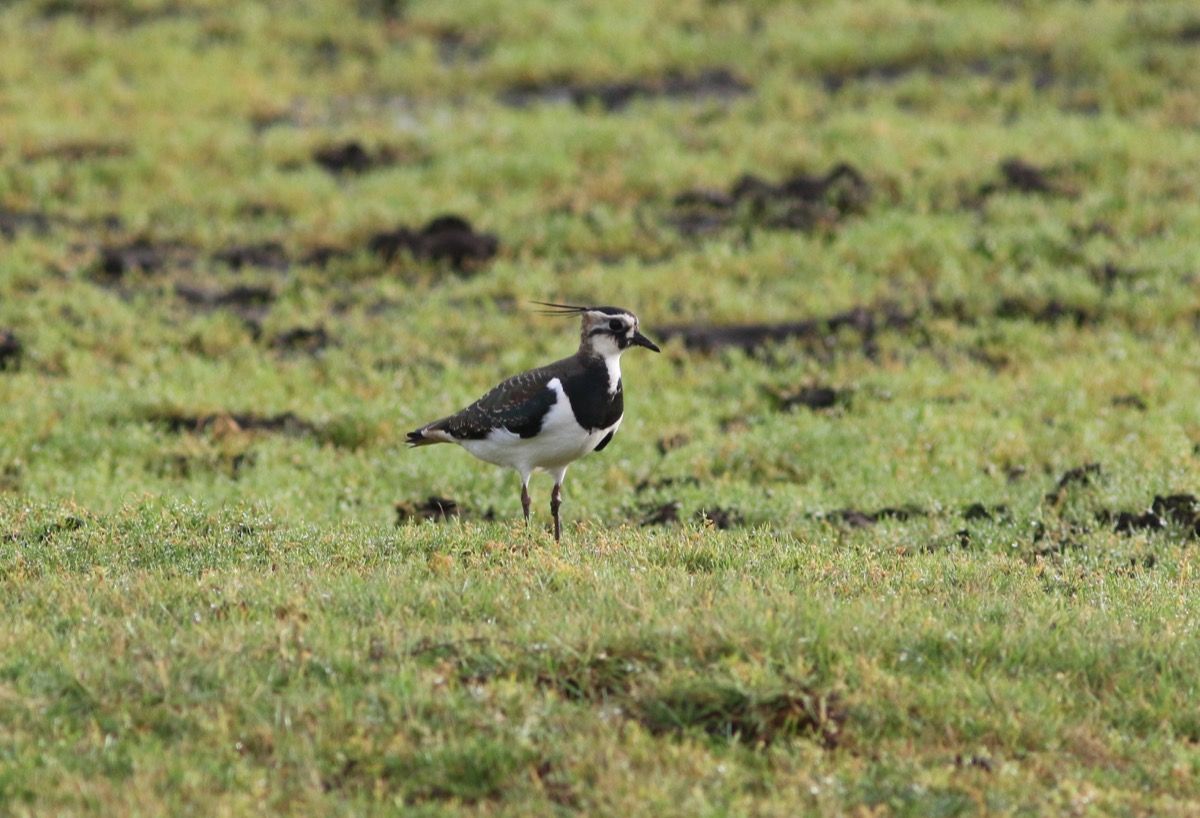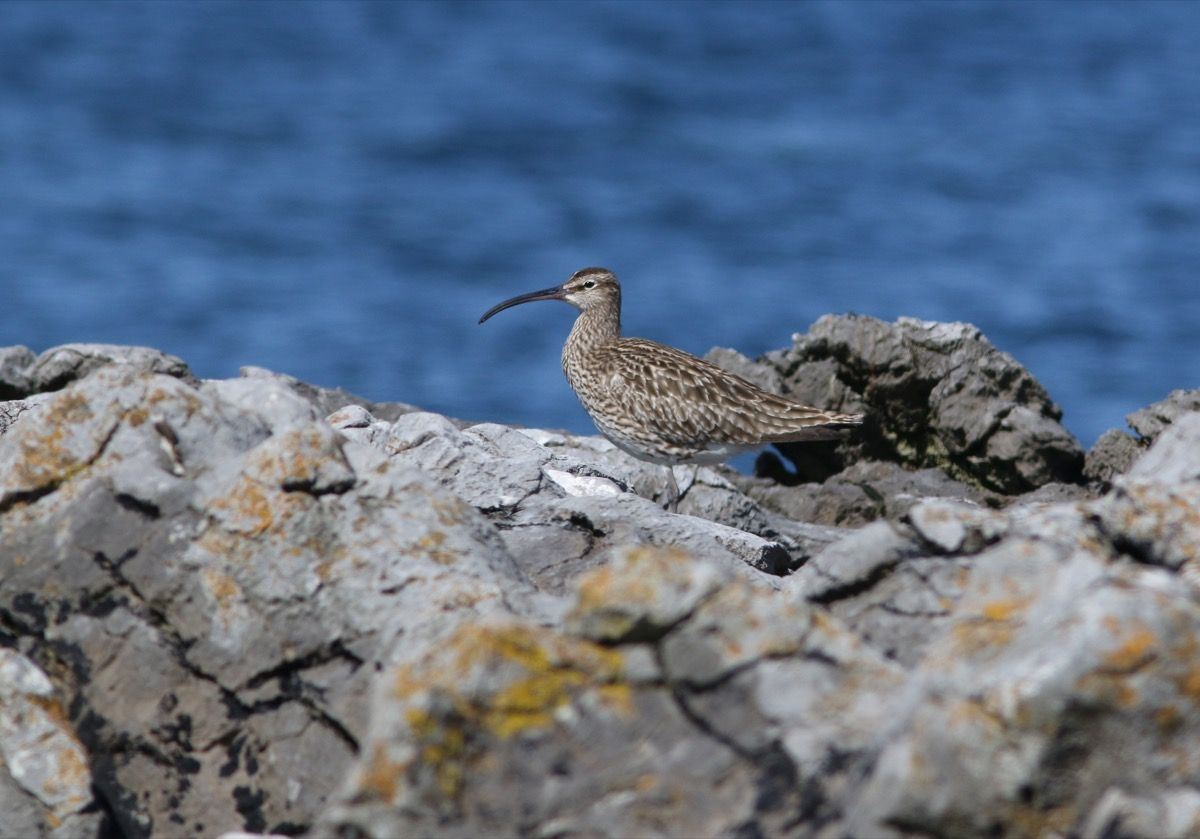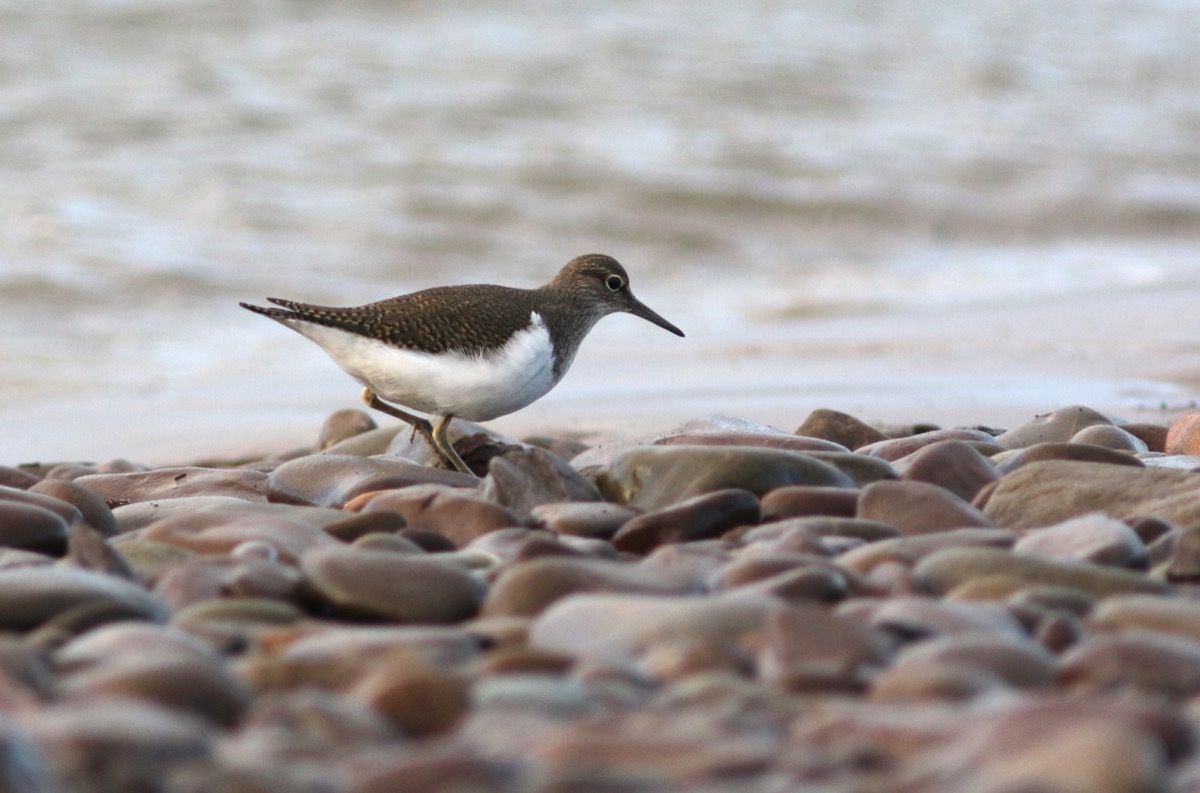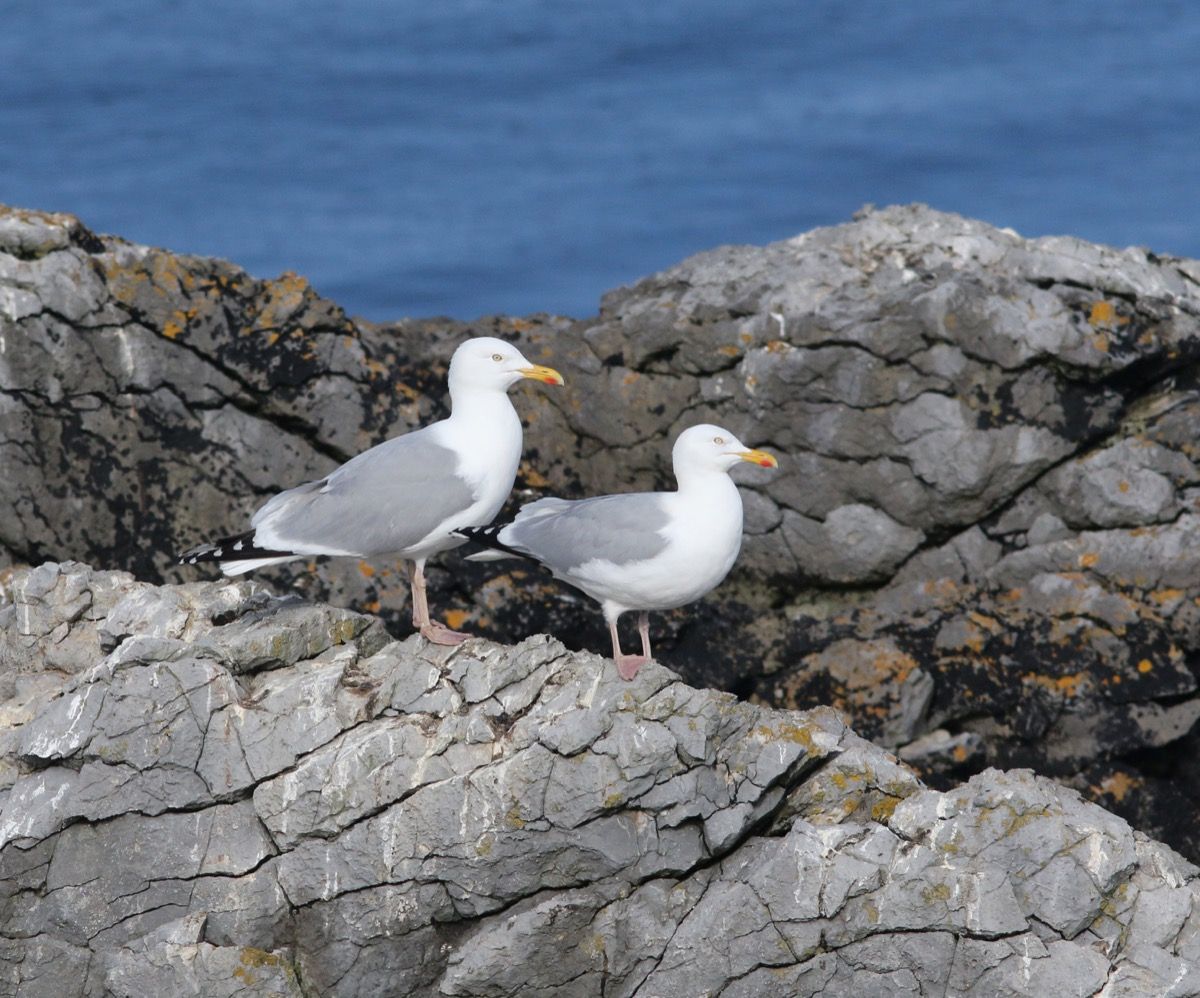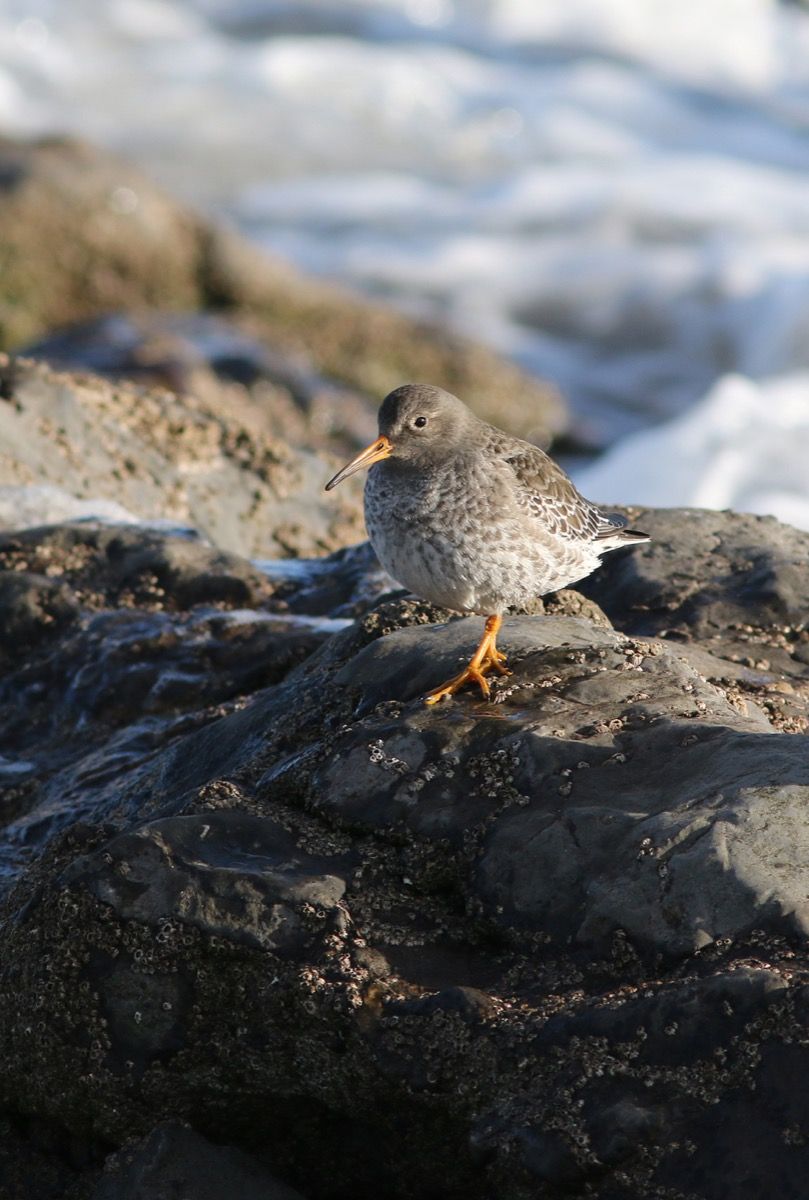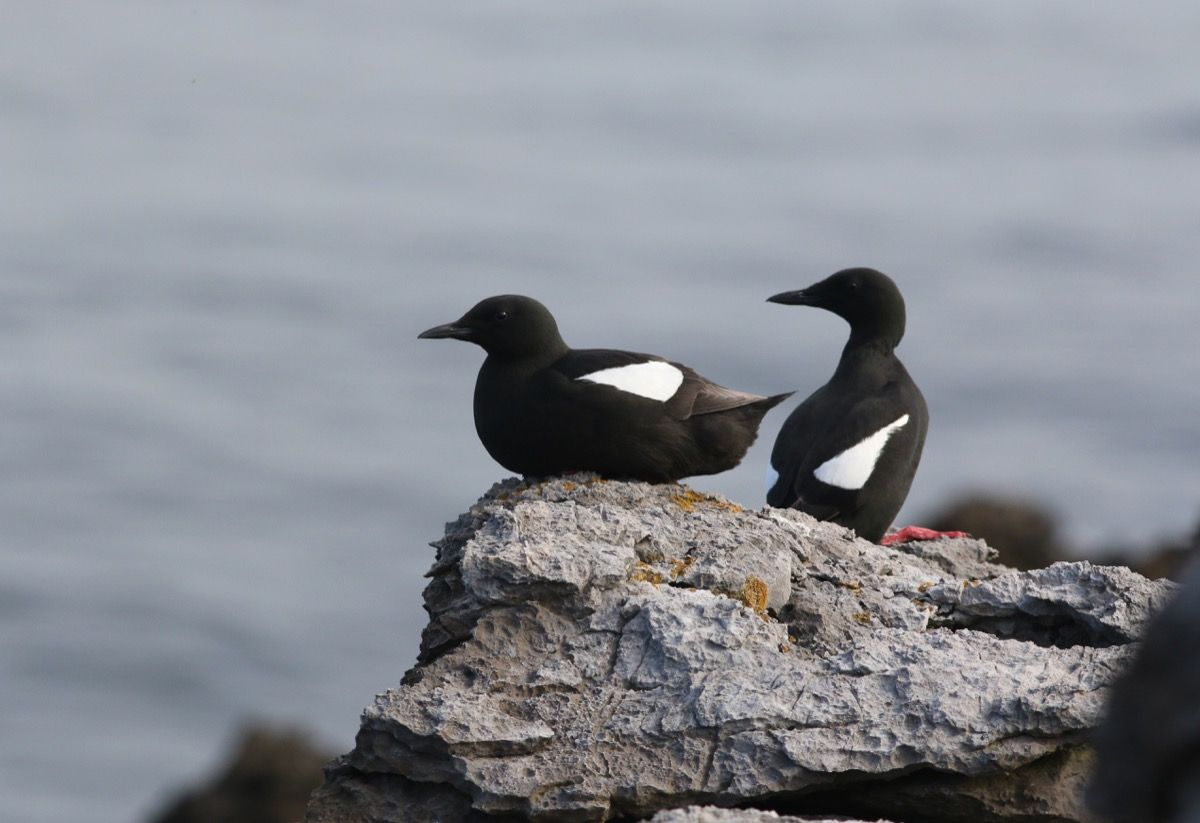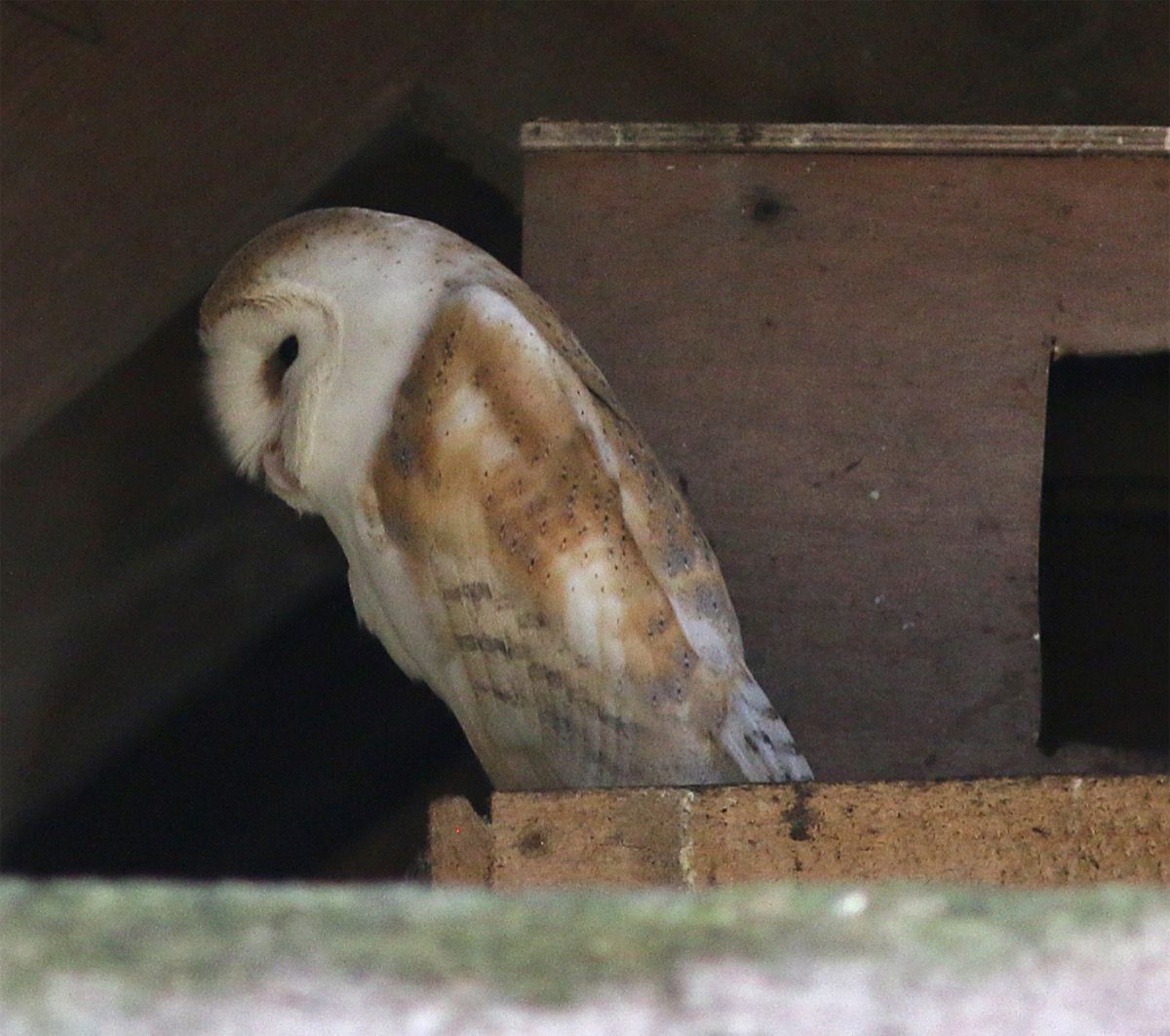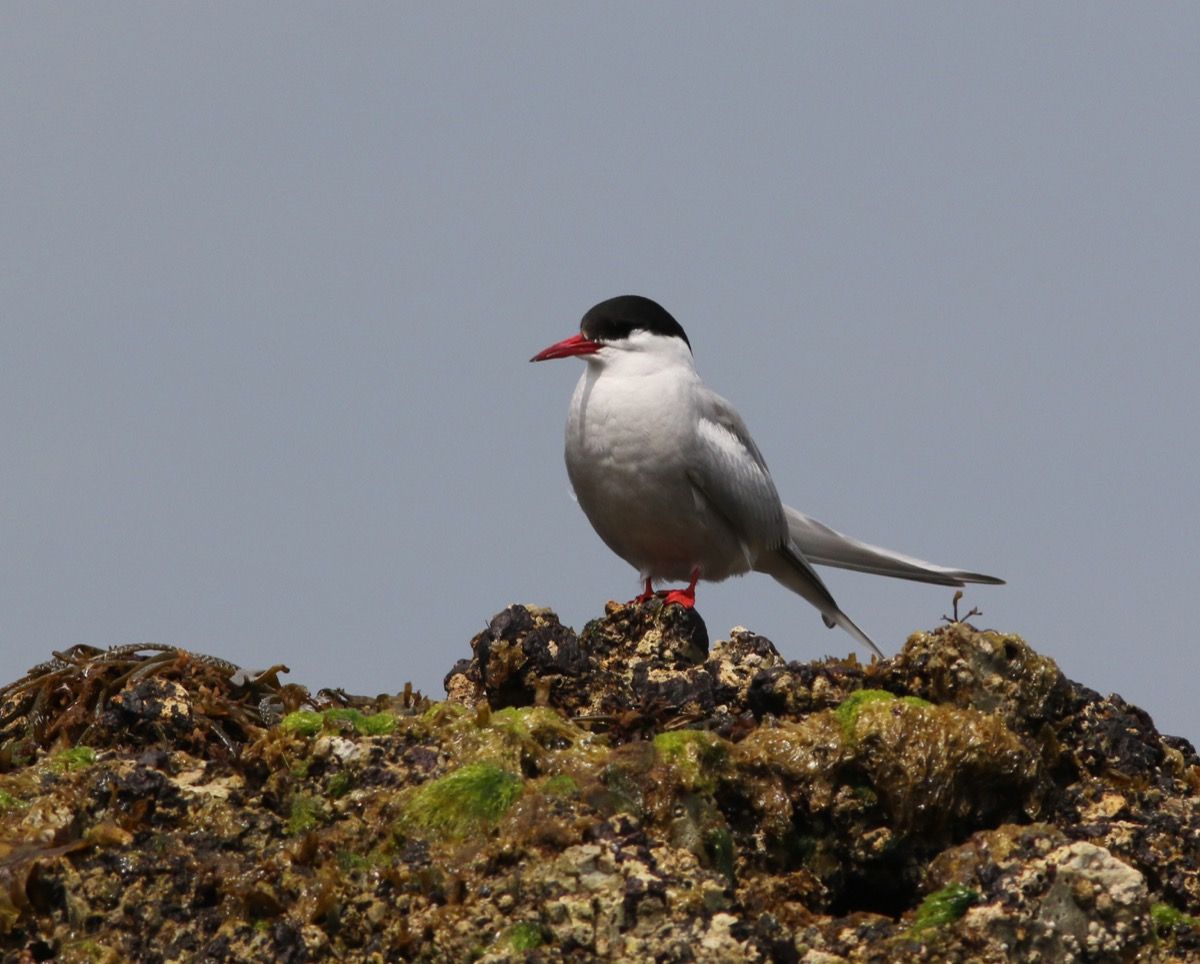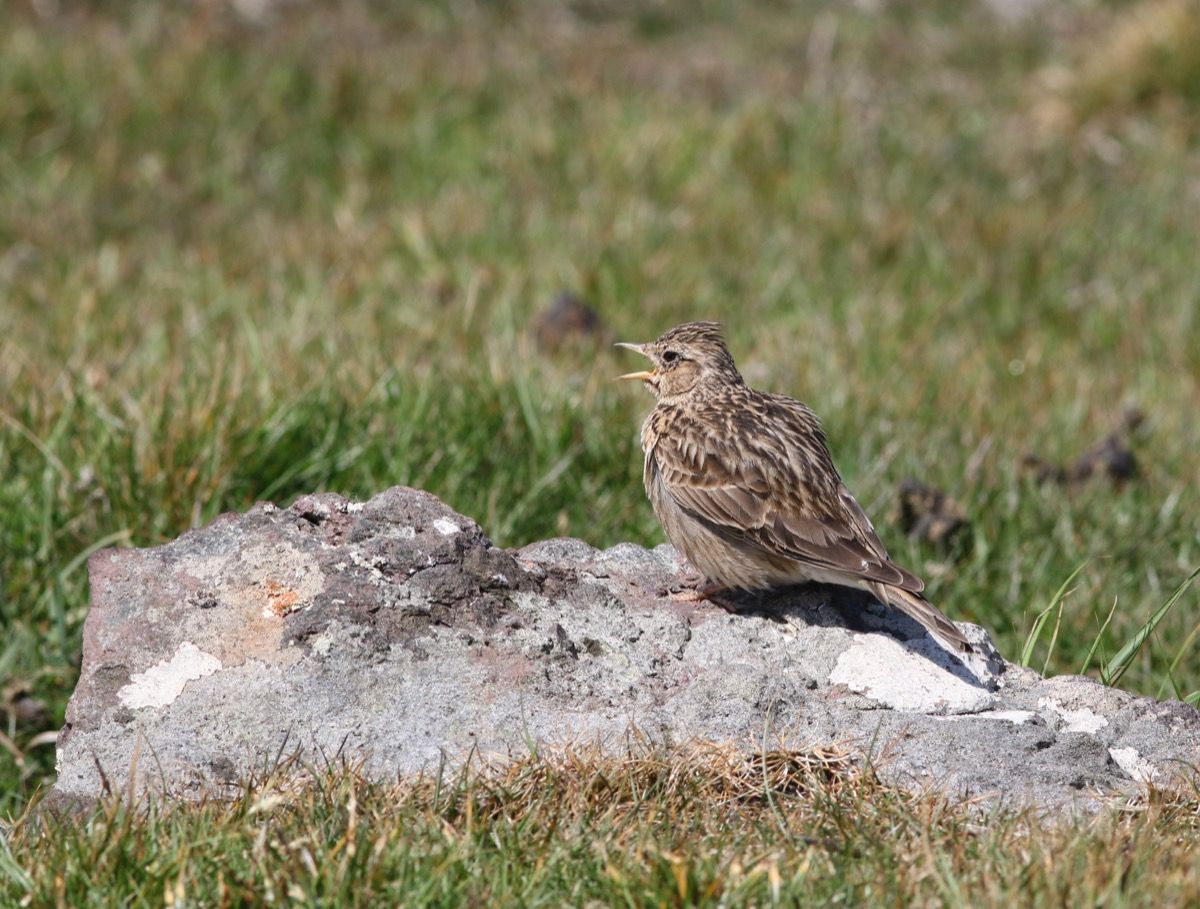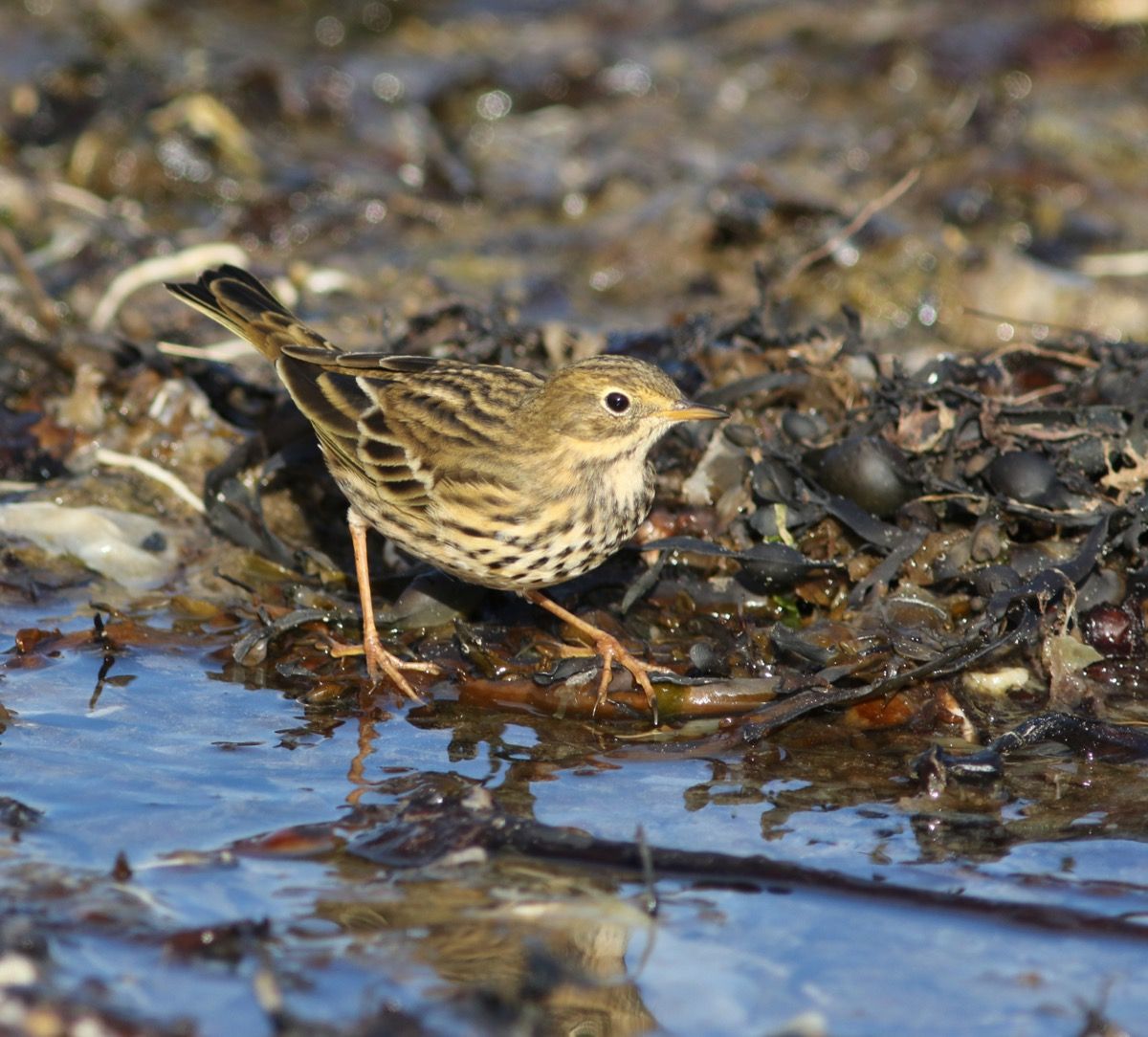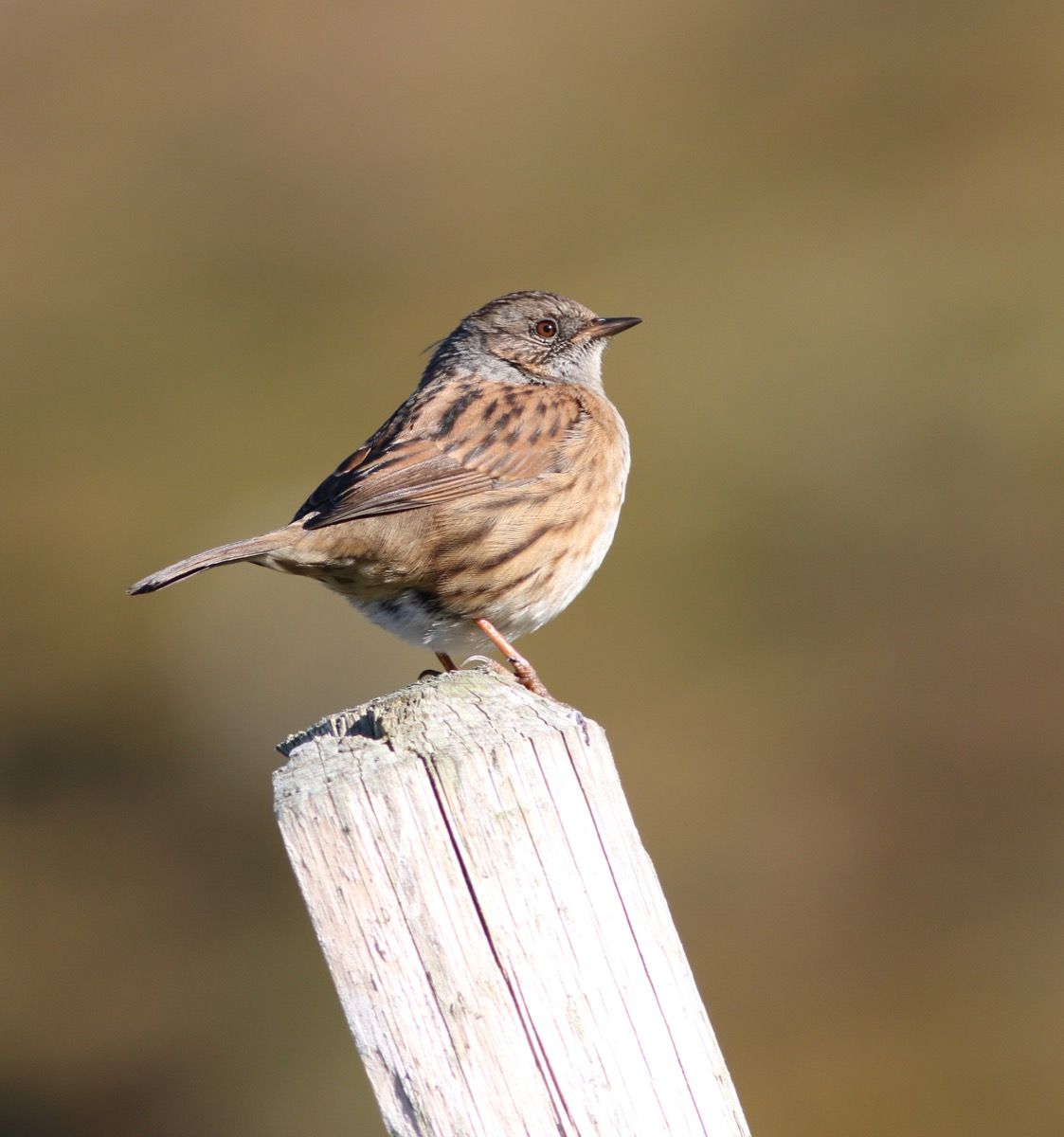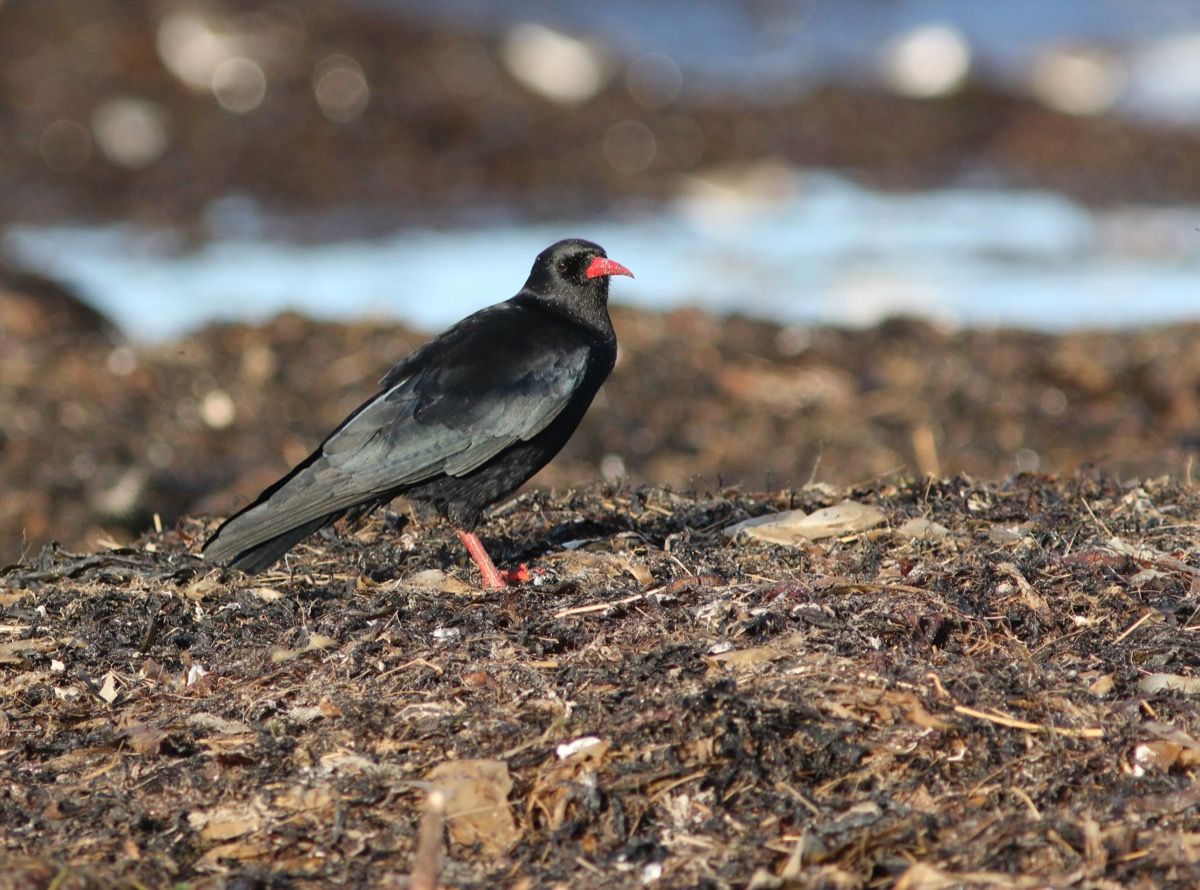The peninsula stretching north from Castlegregory and the numerous off shore islands that make up the Maharees are one of the most important areas for birds in Kerry. The sand, mud and shingle beaches, the rocky shorelines and cliffs, and a rich mosaic of other habitats allow for a large diversity of species, many of which are rare elsewhere in Kerry.
Seasonal changes
Each season brings a different suite of bird species, with thousands of shorebirds and waterbirds arriving from the Arctic to spend the winter feeding on the rich food resources in our comparatively milder winter climate. Most notable at this time of year are the Brent Geese, numbering sometimes in the thousands, which winter along the Maharee shoreline feeding on seaweeds and coastal short grass. These birds travel in small family parties from as far as Arctic Canada, crossing the huge expanse of the Atlantic each spring and autumn. Other shorebirds from the Arctic also arrive for the winter months, such as Purple Sandpiper, a species adapted to seaweed-covered rocky shores, which also crosses the Atlantic twice each year, nesting on the tundra well inside the Arctic Circle. The Maharees are their main wintering area in the whole SW of Ireland and are very scarce elsewhere. Other shorebirds which winter in large numbers in the area are birds which nest in Iceland - such as Wigeon, Teal, Dunlin, Golden Plover and Great Northern Diver - and those which nest in the Scandinavian and even Siberian high Arctic, such as Bar-tailed Godwit, Turnstone and Sanderling.
Spring
As spring arrives and the days lengthen, almost all these birds depart to their distant nesting grounds to the north, but it is then that other visitors from the south arrive to nest. Each May heralds the arrival of several hundred terns to the area, all seeking a safe, predator-free island on which to lay their eggs. Five species of tern have nested, though two of those (Sandwich Tern and Roseate Tern) have only rarely done so. The most common nesting tern is Arctic Tern, which number between 100-200 pairs nesting on the Maharee islands each year. They have perhaps the longest migration of any bird in the world, and would have wintered in the South Atlantic, even venturing as far as the Antarctic, but each year make that incredible journey to our shores. The other species of tern which nest are Common Tern and Little Tern. Common Terns migrate from Africa each spring and numbers are variable each year, sometimes in single figures, sometimes as many as 80-100 pairs. Little Tern is one of the rarest seabirds in Ireland and these days only 1-3 pairs nest each year on shingle beaches. Up until a decade or so ago, their numbers were higher, with usually 15-20 pairs nesting annually, but their numbers are now much diminished, possibly due to human disturbance on the nesting beaches. They are, as the name suggests, tiny birds, but incredibly agile in their fish-catching plunges, yet each year they also make journeys of thousands of kilometres to winter along the coast of West Africa.
Summer
The Maharee islands are busy places in summer. Not only are hundreds of terns feeding and raising their chicks, but there is also a wide variety of other species of seabirds. On the steeper, higher cliffs, Fulmars nest, along with Black Guillemots and Shags, while on the flatter island tops there are colonies of nesting gulls, notably Herring, Lesser Black-backed, Greater Black-backed and Common Gull. The first and last of these nest in nationally important numbers, though both species have experienced widespread declines elsewhere in Ireland. Thankfully their numbers seem to be holding their own in the Maharees. Other nesting seabirds that occur on the islands are Cormorant - with a single colony of 30-50 pairs - and Storm Petrel, which only returns to the islands at night to their nests in a cavity in a stone wall, or burrow. Although not visible by day, these tiny black and white seabirds make a night visit to the islands most memorable as they sing their churring songs from within the stone walls, and rocky nooks and crannies. About 1200 pairs nest on several of the islands – about 1% of the entire Irish breeding population.
Autumn
As the terns and seabirds finish their nesting season, the autumn migration gets under way, with most of the summer birds heading to the south, to be replaced by the huge numbers of birds which will spend the winter. Particularly in autumn, many shorebirds such as Dunlin, Godwits, Whimbrel and plovers will pause briefly to feed along the shore before continuing to winter further south. It is then that birdwatchers scan the large flocks to pick out any rare visitors. The Maharees have played host to many rare birds over the years, including North American species such as Buff-breasted, Pectoral and White-rumped Sandpipers, European species such as Osprey, Black Tern and Gull-billed Tern, and others from the Arctic such as King Eider, White-billed Diver and Velvet Scoter.
Winter
So no matter what the season, the Maharees provide lots of ornithological interest. The whole area is vital for not only the important nesting seabirds, but also the huge number of wintering and migrating birds. We can all play our part in ensuring that this richness of diversity continues and that the huge numbers of birds continue to visit us. Be aware of disturbing birds on beaches in winter – flushing birds by walking through flocks or allowing dogs to chase birds prevents them from feeding and can affect their survival. In summer, be very careful about stepping on nests or disturbing nesting birds, especially on the islands. Each successful nest means a more secure future for both the individual birds and for the species overall. We should do all we can to make sure they continue to thrive.
Click on the images to enlarge.
Please respect the birds!


